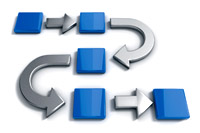Business, College of

Department of Supply Chain Management and Analytics: Faculty Publications
Document Type
Article
Date of this Version
2017
Citation
Engineering Applications of Artificial Intelligence 65:433-435
Abstract
Risks exist in every aspect of our lives, and can mean different things to different people. While negative in general they always cause a great deal of potential damage and inconvenience for stakeholders. Recent engineering risks include the Fukushima nuclear plant disaster from the 2011 tsunami, a year that also saw earthquakes in New Zealand, tornados in the US, and floods in both Australia and Thailand. Earthquakes, tornados (not to mention hurricanes) and floods are repetitive natural phenomenon. But the October 2011 floods in Thailand were the worst in 50 years, impacting supply chains including those of Honda, Toyota, Lenovo, Fujitsu, Nippon Steel, Tesco, and Canon. Human-induced tragedies included a clothing factory fire in Bangladesh in 2012 that left over 100 dead. Wal-Mart and Sears supply chains were downstream customers. The events of Bhopal in 1984, Chernobyl in 1986, Exxon Valdez in 1989, and the Gulf oil spill of 2010 were tragic accidents. There are also malicious events such as the Tokyo Sarin attach in 1995, The World Trade Center and Pentagon attacks in 2001, and terrorist attacks on subways in Madrid (2004), London (2005), and Moscow (2010). The news brings us reports of such events all too often. The next step up in intensity is war, which seems to always be with us in some form somewhere in the world. Complex human systems also cause problems. The financial crisis resulted in recession in all aspects of the economy. Risk and analytics has become an important topic in today’s more complex, interrelated global environment, replete with threats from natural, engineering, economic, and technical sources (Olson and Wu, 2015).
Included in
Business Administration, Management, and Operations Commons, Management Information Systems Commons, Management Sciences and Quantitative Methods Commons, Operations and Supply Chain Management Commons, Technology and Innovation Commons


Comments
DOI: 10.1016/j.engappai.2017.09.001